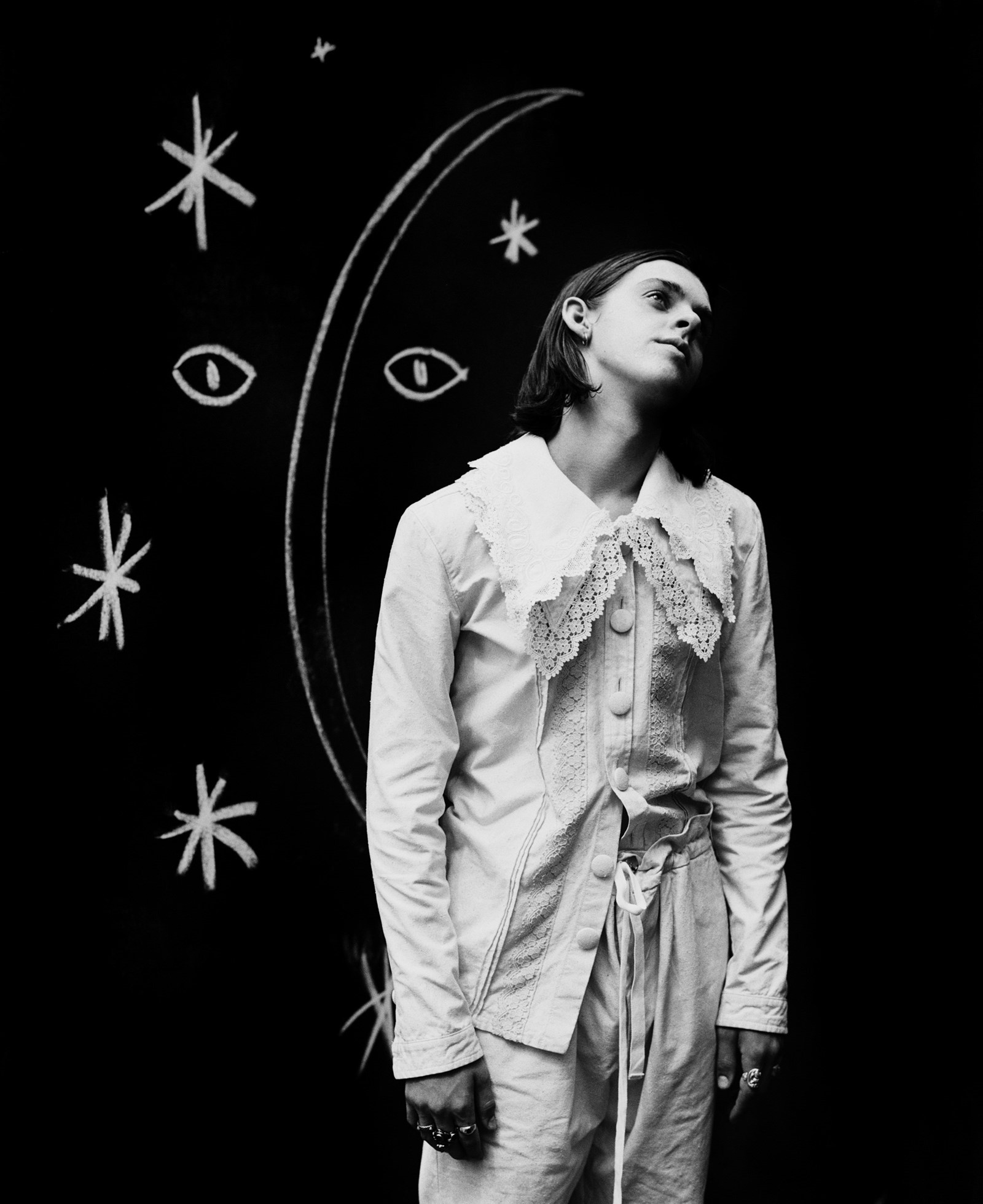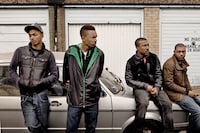Taken from the autumn/winter 2019 issue of Dazed. You can pre-order a copy of our latest issue here
Earl Cave is at a diner on Portobello Road, waiting. For the films he’s worked on over the past couple of years to see the light of day. To show us what he’s been quietly occupied by. For his debut as a leading man, a moment which supporting roles in Born to Kill and The End of the Fucking World have paved the way for.
The 19-year-old says he’s a fan of the west London street market, which outfitted all the gritty fashion editorials of the 90s. Sat in a booth wearing a retro open-collar polo, his slender frame drips with silver and yellow-gold jewellery, his fingers heavy with rings from The Great Frog – the original Soho heavy metal spot for rockers, punks and bikers.
“You know the rings they do with the eyes?” Earl begins. “Those are all real, hand-painted hospital prosthetics. It’s incredible how they do that; they’re beautiful.” But the actor isn’t wearing one of these third eyeballs on his hand or around his neck – he sees clearly enough. With the momentum behind him that’s about to be unleashed, eyes will soon be on him anyway.
It’s all been done so elegantly, of course. Meet Earl, and his superlunary manners shine through immediately, along with a gentle mystique that’s present no matter what he’s dressed in. That his entire career so far has been hidden in plain sight is impressive – Earl appears entirely without braggadocio, straight off a skateboard. Though, as you’ll see from the pictures here, he is equally adept at running rings around the (crescent) moon. When he arrived on set for the shoot, the team discovered Earl’s star-themed tattoos for the first time. Cosmic.
We begin by talking about ugly shoes. Because that’s what Earl’s character, 15-year-old Daniel Bagnold, does at the start of Days of the Bagnold Summer. Not that Bagnold wants to: taken shopping by his mum Sue to get wedding-appropriate footwear, his objections are an exercise in adolescent self-defence. One that we’ve all been through. “We’ve definitely all been there,” says Earl. “When I was at school, everyone wanted pointy shoes, but the mums would always get the round, Frankenstein shoes. And now I like the round ones best!”
But Bagnold doesn’t want pointy shoes. He wants skate shoes Tippexed with heavy-metal ‘poetry’ – to match his wardrobe of black Metallica t-shirts and hoodies with thumb-holes through the sleeves. Sue, played by Monica Dolan, is having none of it. “There are so many of these little things (in the film) that are just like, ‘I’ve had that conversation before with my mum.’ So many times I read the script and I was like, ‘I’ve had this (chat) almost word-for-word’ – (my mum) telling me to condition my hair or something like that. It’s those things that really bring the film to life.”
A coming-of-age comedy from first-time director Simon Bird (AKA Will from The Inbetweeners), Days of the Bagnold Summer is every bit as fluent in awkwardness as you’d expect, with a screenplay by Bird’s wife, Lisa Owens, and a Belle and Sebastian soundtrack composed especially for the film. “Simon is one of the biggest awkward teenagers in England,” says Earl affectionately of Bird’s public image. “He had this great energy to him and let me do my thing as he knew how I wanted Daniel to be. But he was also so great with direction. I love all the stuff he’s done.”
Daniel starts his school summer holidays disappointed. He’s set to go to Florida to stay with his father and partner Bernie but, with a baby on the way, they cancel at the last minute. So he won’t get to ride around in Dad’s convertible MG – which, it soon transpires, has likely been paid for with his mum’s missing child-maintenance money. Daniel is stuck with the realisation that his father is maybe not so wonderful after all, as he and his mum prepare to muddle through six weeks in English suburbia, with its absence of crocodiles, Universal Studios and 30C-plus temperatures.

“I think Daniel and Sue are going through stages of their lives which are very similar in a way,” Earl offers. “Neither of them really know what they’re doing, and Sue is trying to control this kid who doesn’t want to be controlled – they’re colliding constantly. I think the idea of giving each other time is sort of what the film’s about. Figuring things out and not having to rush.”
Their spiky relationship is softened by the particular language of teenage diet – even after a caustic argument, there’s the unconditional love of a frozen pizza in the freezer for dinner. Coming home from a day’s work at the library, Sue finds Daniel ‘eating lunch’ at 5pm – a ketchup sandwich, because there’s nothing else left in the cupboard.
“Ketchup sandwiches are OK,” says Earl. “They’re not so OK after, like, seven of them, (when) you have to keep doing it for the take. I had to eat so much in this film – I think Simon was having a laugh because I ate so much cereal, so many crisp sandwiches, and barely any of (the footage) got used! It was pretty funny.”
“The first time I met Earl I was a bit intimidated by him, to be honest,” Bird explains. “That’s not really Earl’s fault. That’s more my issue. I just remember thinking this kid was the total opposite of me when I was 18. He was wearing an oversized Siouxsie and the Banshees t-shirt; he’d painted his own shoes; he had long hair, for goodness’ sake! He just seemed so effortlessly cool, which he clearly is, but he’s also an incredibly sweet, self-effacing, gentle, arty guy, who also happens to be totally hilarious and a lot of fun to hang out with.”
“Technically, he was like a hoary old pro with 20 seasons at the RSC under his belt, rather than a teenager on his second-ever film set,” Bird continues of Earl’s impressive performance, which manages to be moody without being unlikable. “You’ve got to be sad and introverted without becoming a void. Earl made it look easy, though. His enthusiasm and openness felt really unique and special. He was the life and soul, whether he was shooting craps at three in the morning in a casino in Southend-on-Sea to celebrate the production designer’s birthday, or letting the make-up team give him bangs at the wrap party. I have never met Tom Hanks but I imagine it was a bit like spending a month with Tom Hanks, if Tom Hanks was a skater boy with impeccable taste in music.”
“I think Daniel and Sue (in Days of the Bagnold Summer) are going through stages of their lives which are very similar in a way. I think the idea of giving each other time is sort of what the film’s about” – Earl Cave
Just like the Netflix/Channel 4 series The End of the Fucking World – we’ll get to that shortly – Days of the Bagnold Summer was adapted for the screen from a graphic novel, by Joff Winterhart. “There’s this whole world of undiscovered stories in graphic novels, stuff that words cannot always explain,” Earl muses. “To describe Daniel in words would be difficult, but once you see the drawing of him, you completely get it, you know? It must have been strange for Simon when I walked in. My agent sent me the (book), and I was like, ‘Fuck off!’ It was so weird – (Daniel) looks like me so much. My hair was exactly that long.”
In the film, Daniel’s cousin declares him a ‘goth’, and he corrects her that, actually, he doesn’t know what he is – which is exactly what the film gives him space to be, unlabelled. That open-endedness is valuable for anyone in the process of finding themselves. When Daniel writes ‘SKULL SLAYER’, the name of his fictional metal band, on his arm in marker pen, it becomes something to achieve – even if the group doesn’t end up looking quite as he imagined. But it was while researching his role as Dan Kelly in his next film, The True History of the Kelly Gang, that the actor started a band for real.
During pre-production, Earl was invited to stay for a month in Melbourne, as a team-bonding exercise with his co-stars and fellow Kelly gang members George MacKay, Sean Keenan and Louis Hewson. Upping the ante, director Justin Kurzel told them to form a band. “There’s this really punk aspect to the film where we’re angry at the world and we’re angsty and we don’t give a shit about anyone,” says Earl, explaining the band’s antagonistic approach. “The police hate the Kelly family, who steal and take – (it’s) every man for himself. So we started this band and Justin was like, ‘You’ve got three weeks to write all the songs yourselves.’ He’d booked us a gig at The Gasometer Hotel in Melbourne!
“It was just a random gig, we didn’t tell the audience it was related to the film. Justin was like, ‘You’re going to have to wear dresses,’ because the Kelly gang wore these dresses to rob banks and freak people out, imitating another gang from Ireland. So we ended up writing 11 songs as this punk folk band that we named Fleshlight! We had warpaint on our faces; it was awesome. I played bass and keyboard, and I wrote one song, a very Saints-y punk song called ‘Psyche’. George (MacKay, who plays Ned Kelly) wrote a lot of them – he’s a great songwriter. The songs are going to be in the score, I think. Just before we left we recorded them in a studio.”
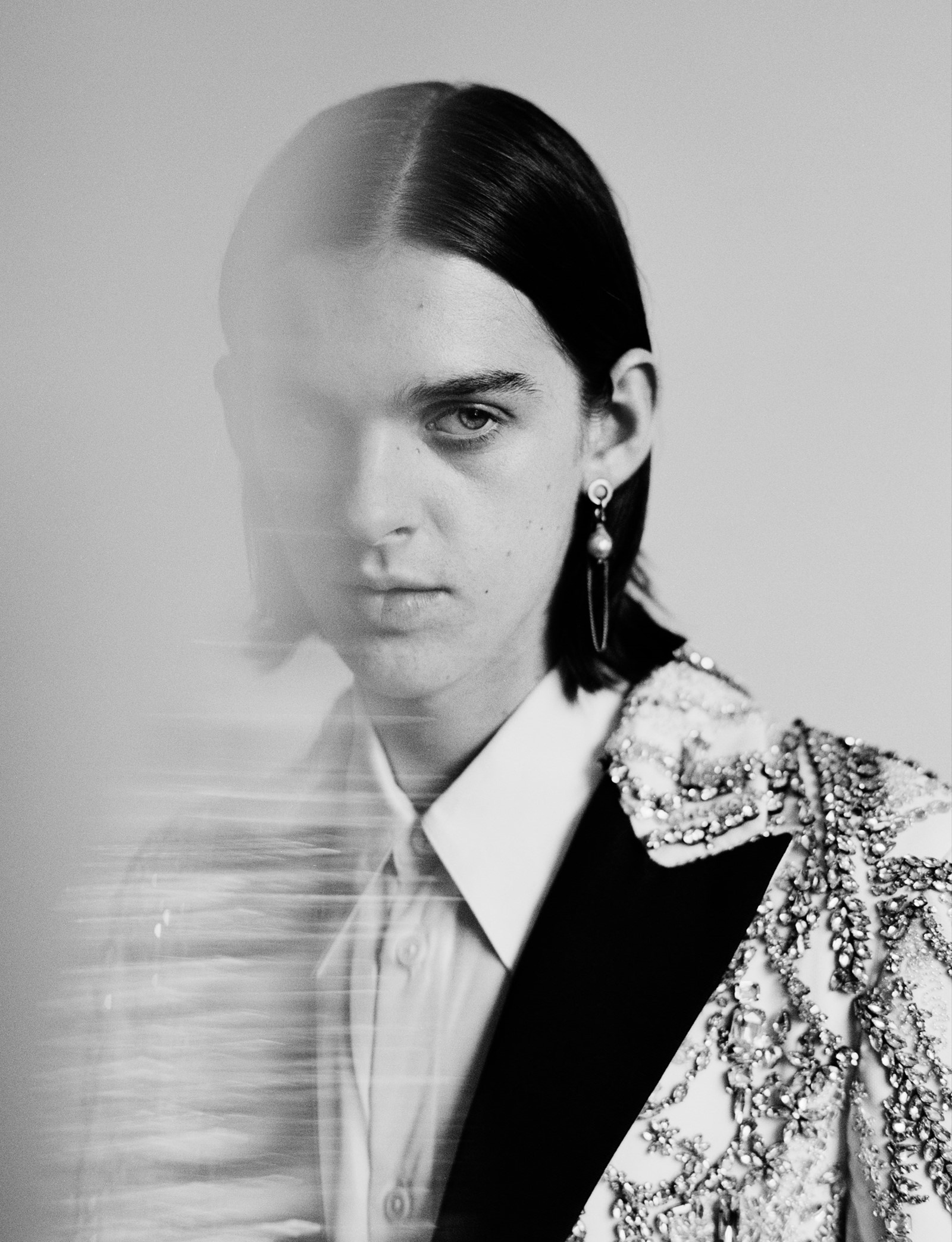
The film, based on Peter Carey’s Booker Prize-winning novel of the same name, tells the story of notorious Australian bushranger Ned Kelly. “Dan Kelly is very different from the quiet, awkward teenagers I’ve been playing,” Earl says of his character in the film, Ned’s kid brother and fellow fugitive from the law. (Russell Crowe, Nicholas Hoult and Charlie Hunnam also star.)
“He’s a really extroverted, nuts kid, constantly trying to piss people off and fuck about the whole time. It was an awesome role to play – I actually turned 18 on the plane to Australia, over Minsk. George (MacKay) was sitting next to me; I had my first legal drink with him – a ginger ale and whisky.”
Filming his first two movies brought Earl a reassuring fate: working in the places his parents grew up in. The actor’s dad is Bad Seeds singer Nick Cave; his mum is Susie Cave (née Bick), a 90s supermodel and the designer behind The Vampire’s Wife, a line of part-prairie, part- gothic dresses that make women look phenomenal and bring men to their knees. Earl is a subtle combination of his parents’ features, which chime and ring out as he gestures.
“It was actually very strange because I was filming in Wangaratta, which is a tiny town in the middle of nowhere where my dad grew up as a very young boy,” says Earl. “And straight off the back of that I went to do Bagnold in Bromley, where my mum (was living) at the same age. So I went to my mum’s old house in Bromley, and I saw my dad’s house in Wangaratta. It was so wild – out of everywhere in the world...”
“There’s a really punk aspect to (The True History of the Kelly Gang) where we’re angry at the world and we’re angsty and we don’t give a shit about anyone... The police hate the Kelly family, who steal and take – (it’s) every man for himself” – Earl Cave
Of course, Earl has also inherited a deeply felt love of music from his dad. A self-described “old soul”, he cites Van Morrison, David Bowie and Bob Dylan as some of his favourite musicians, alongside 60s folkie Karen Dalton and electronic artist Shigeo Sekito. “Being surrounded by a musical half and a fashion half and having (those sides) come together, I feel like I’m a child of both,” Earl muses. “A lot of the way I dress comes from the way my parents dressed me when I was little. My mum and dad put me in these funny clothes and I’d be like, ‘No, I don’t wanna wear a three-piece suit, Dad, fuck you!’ Now I think I’m so lucky to have that. My mum is an amazing designer, she’s been doing some incredible stuff – and I’ve always thought she was really cool.”
“I like the way Dylan dresses, (it’s) almost like farmcore. I don’t like the way that things are dictated by what everyone else is doing. Skateboarding has been important for me: in Brighton, you can just go to the skate park, wear whatever you want and do whatever you want. There’s a free spirit and, if you spend enough time there, that spirit starts to rub off on you. I live in London now, but the idea of going down for a weekend and skating and hanging out with my friends is bliss. So nice.”
One relationship that has visibly raised Earl beyond the usual skatewear fare has been with Gucci’s Alessandro Michele, a collaboration which came about serendipitously. “(My family and I) bumped into Alessandro at a restaurant and he started dressing us,” Earl reveals. “(The team) know what I like to wear. Though I think they’re starting to get a bit more bold each time – the first thing I wore was a beautiful blue suit with baby-blue floral lapels. It was like a dream suit. Then there was a bright pink fuchsia velvet suit! I wore it to the (AW18) show and to my school prom afterwards. It was too great to just sit in my cupboard.
“I’m not always wearing Gucci, though!” Earl continues. “If anything, I only very rarely dress like that. My friend, Zane (Crowther), has got this skate company called Momento di Dormire, and there are lots of skate brands in Brighton making these amazing videos and clothes – another friend, Archie (Hyde), has one called Youth Club.”
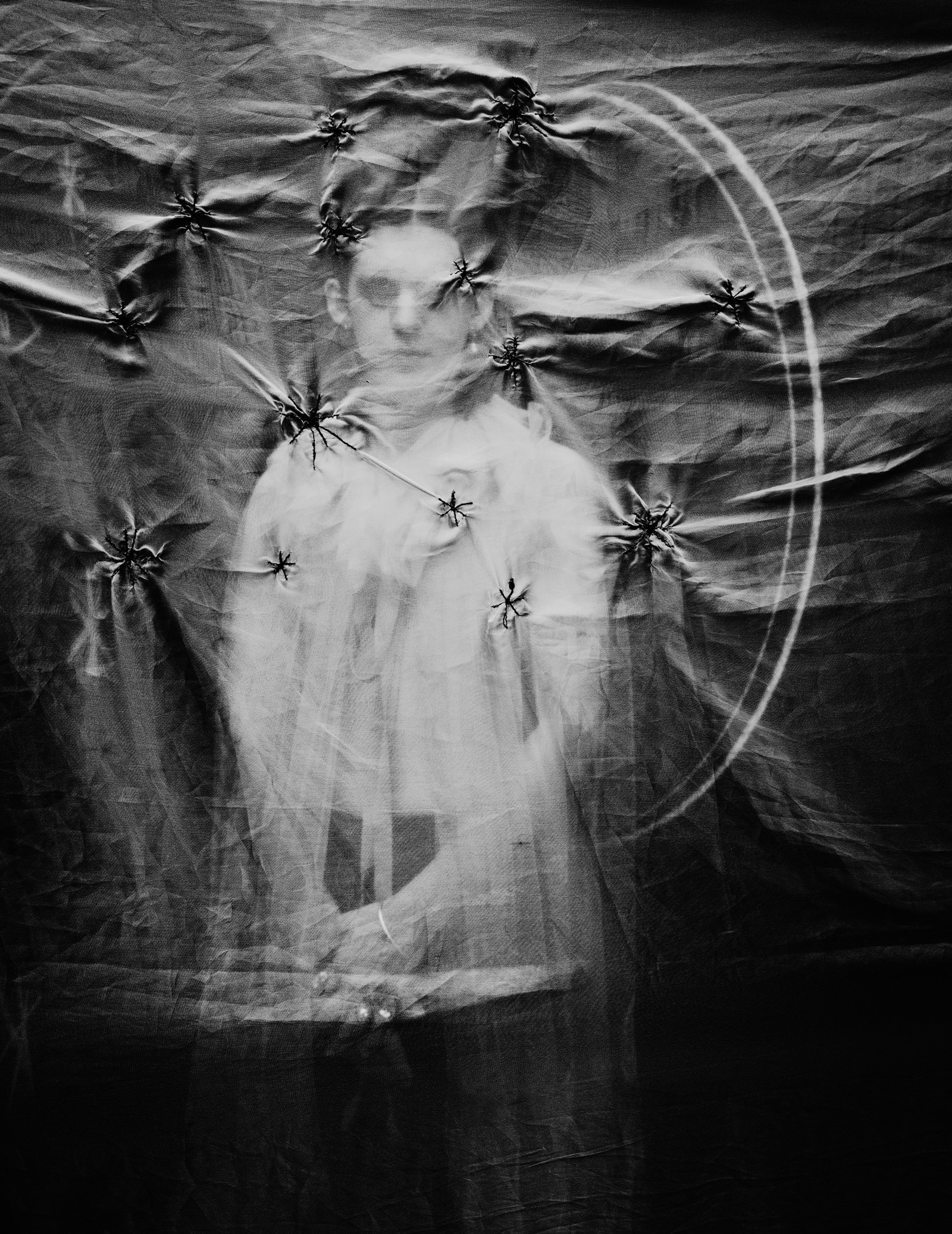
Earl clearly enjoys being in the moment, and perhaps it is this which distinguishes him among his self-conscious generation. “There was always a piano in our house. I would tinkle the ivories now and then – I always play now,” he says.
“Playing piano, I can relax and be in this really happy state. It’s very calming for me. And the guitar, as well. I never really had lessons or people teaching me, I just sort of play around.
“Sometimes I’ll buy a burner phone and leave my iPhone at home. I did that for three months and had this little Nokia, I loved it. I got an iPod and was listening to that; I was reading all the time. I feel very aware of things around me (now). After a while you get used to sitting on the tube and not having to distract yourself from how many stops you have left. There is something nice about just sitting, being comfortable and waiting. Being present.”
Earl’s first acting job ended up on the cutting-room floor, but he credits the experience with cementing his ambitions – he had a line in 2018 drama Old Boys starring Alex Lawther, who he later appeared with in The End of the Fucking World. “I’m kind of glad it didn’t see the light of day – I had these awful highlights in my hair that they had to dye all black,” he remembers. “Seeing Alex work, I found it exhilarating. I got the bug, I guess.”
In The End of the Fucking World, Earl played a petrol station attendant called Frodo, opposite Felicity Montagu (Sue from Nighty Night and Alan Partridge’s long-suffering PA Lynn). A cult character, Frodo is the subject of gif devotion and gushing message-board odes – a teen who, high on rebellion from Alyssa (Jessica Barden) and James (Lawther), seizes his shot at another reality: life on the run in an Opel Monza. Except that it misfires. (His moment, not the car.)
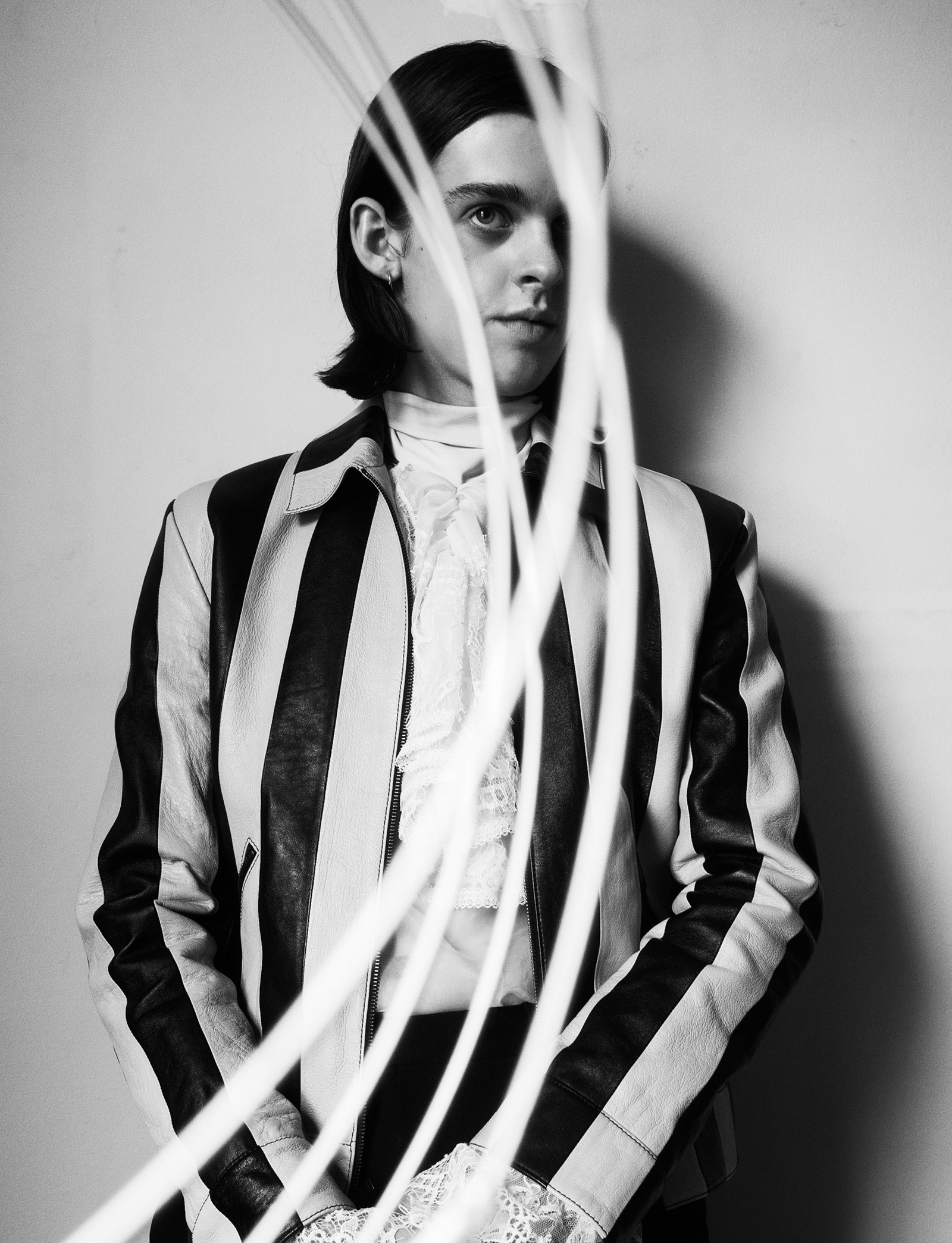
“I was completely over the moon,” says Earl of his excitement at winning the part. “Frodo has got this uncomfortableness with the real world, with socialising and interacting with people, that I think everyone has at that age. He’s quite a relatable character to a teenager. He sees this opportunity to have a bit of excitement in his life and experience a new thing, which is not just behaving and doing as he’s told. Going against the current. Fighting back.”
Earl was flung into the deep end as Oscar in Born to Kill, which also aired in 2017. A four-parter about the psychopathic desires of teenager Sam (played by Jack Rowan), it’s uncomfortably heavy. As a screen debut, it couldn’t get more claustrophobic. “I had to do a scene where Jack pulls me into the shower and beats the shit out of me,” Earl recalls. “I didn’t really understand the severity when I was reading it, then I walked on set and saw Jack getting ready, shadow-boxing and punching walls and going crazy. I was genuinely terrified – he’s, like, the nicest guy ever (but) I walk in and he’s just this animal. I didn’t realise he was gonna turn on the showers or any of that. Afterwards, he decompressed and was teaching me all this stuff because I didn’t know anything, really. I just did a bit of theatre at school.”
What’s impressive is Earl’s instinct for great projects – he hasn’t made a bad choice yet, playing curious and compelling youths in beautifully written dramas. As we wrap up our conversation, pay the bill and head out on to Portobello Road, Earl tells me he’s just taken up Juuling, producing a battleship-grey vape stick from his pocket. The ultra-modern digital cigarette is in contrast to his otherwise classic tastes, a teen prop that’s a sign of our times.
I remark on the way out that it’s funny Earl is about to carve his niche on the big screen playing a pair of Daniels. “Two Dans, man, I know. Typecasting!”
Days of the Bagnold Summer and The True History of the Kelly Gang are in cinemas early next year
Hair Ryan Mitchell at Streeters using Bumble and bumble., make-up Anne Sophie Costa at Streeters using Marc Jacobs Beauty, set design Alice Kirkpatrick at Streeters, photography assistants Maxwell Tomlinson, Louise Oates, styling assistants Met Kilinc, Ogun Gortan, Sara Perilli, make-up assistant Lauren Webster, production Mini Title
